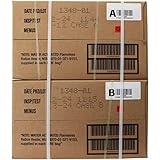Stay Informed and Aware
Understanding the Situation
First off, let’s talk about what’s going on out there. Staying informed means keeping up with news outlets, social media updates, and community alerts. I remember one time, when tensions were high in my city, I made it a point to follow local news channels and Twitter updates. Being aware of what’s happening around you can give you insights into potential outbreaks of civil unrest.
Use reliable sources. Everyone’s got opinions, but not everything you read online is based on facts. I’ve learned to distinguish between clickbait and credible reporting to make better decisions. During tough times, having just the right information can make all the difference.
Additionally, consider joining community groups that focus on safety alerts. It’s a great way to stay in the loop with the real-time happenings in your neighborhood. You’ll find that when the community bands together, you’re less likely to feel alone or overwhelmed.
Prepare a Family Plan
Now, let’s move on to creating a family plan. This is crucial! I remember sitting down with my family and laying out a plan for what to do in case things escalated. We talked about who would grab the kids, how we would communicate if separated, and where we would meet if things got chaotic. Having this plan in place truly eased our anxiety.
Include emergency contact numbers and check-ins, especially if your family is spread out. Make sure each family member has a list of contacts, including neighbors or friends. It can be tough to remember numbers during a stressful situation, so writing them down is helpful.
Regularly review and practice this plan. Just like fire drills, it’s good to keep this plan fresh in everyone’s mind. Revisiting the conversation every few months ensured we all felt comfortable with it, preventing panic if we ever had to act quickly.
Assemble a Go-Bag
What to Include
When it comes to assembling a go-bag, think essentials! I put together a bag for each family member that includes first-aid supplies, water, snacks, flashlights, and a change of clothes. Trust me, having these items ready at a moment’s notice can really save you a headache later on.
Don’t forget important documents! Copies of identification and insurance papers can really be lifesavers if you have to evacuate quickly. I also added a small emergency radio; it’s absolutely crucial to stay connected to updates when phones might not be reliable.
== > What if ... Get a FREE Subscription to PREPARE
Lastly, tailor the bag to your specific family needs. If you’ve got more toddlers than teens, make sure you’ve packed some comfort items for them, like a favorite toy or blanket. Ensuring everyone has what they need makes a world of difference!
Keep It Visible and Accessible
Your go-bag won’t do much good if it’s buried in the back of a closet. Keep it somewhere visible and easily accessible, like in the front closet or trunk of the car. I was a little shocked to realize how easily it could slip my mind when it was out of sight!
Consider a designated spot in your home where family members know to look. It’s all about establishing that awareness. Placing a bright-colored tag on the bag can help, too—I made mine pretty flashy so that everyone could spot it easily.
Also, making sure that the go-bag is regularly maintained is key. I’ve learned from experience that stale snacks or expired medicine don’t do anyone any good. Check it at least every six months to refresh and update the supplies accordingly.
Stay Connected
Communication Tools
The next step is all about staying connected. Ensure everybody has a fully charged mobile device with the necessary apps for emergency communication. I invested in family communication apps that work even when cell service is down, which really gives peace of mind.
Have a group chat or some sort of communication plan in place. It can be as simple as a WhatsApp group that everyone checks regularly. Being able to send a quick text updates everyone on your status or plans.
Also, practicing the plan is essential! I’ve found that it pays to simulate scenarios with my family, so if something does happen, we fall back into our roles without panic. You want everyone to be prepared and know what to do!
Get Preparedness and Self-Reliance Tips. Subscribe Now!
Emergency Contact List
Creating an emergency contact list might sound basic, but it’s so crucial. I keep a printed version stuck on the fridge and have them saved in devices. Make sure to include not just family, but also trusted friends and neighbors. You’d want to know who to call when immediate family isn’t reachable.
During civil unrest, it’s common for cell networks to get jammed, so having backup contacts is a smart move. I had this surprise once when I couldn’t reach my family but could get through to a neighbor who helped out immensely!
It’s also a good idea to go over your contact list regularly. Life changes fast, and I learned the hard way that if you let it get stale, you might miss out on reliable contacts when you need them most.
Stay Calm and Assess the Situation
Managing Your Emotions
When civil unrest strikes, staying calm is easier said than done, right? But I’ve learned that managing one’s emotions can significantly impact the family dynamic. By remaining composed, I found it easier to lead by example and keep everyone relaxed during tense moments.
Taking deep breaths and implementing some mindfulness techniques can really help. Even a few minutes of silence can provide clarity amidst chaos. I use finite breathing exercises with my kids, which turns the focus away from fear and anxiety.
Trust me, create a calm space in your home. Make your safe room a relaxing zone where everyone feels comfortable and secure. Clear the negative energy; light a few candles or play some soothing music—it can reduce tension for everyone involved.
Grasping the Bigger Picture
Assessing the situation is about understanding what’s happening around you. Get a sense of the events unfolding; rather than jumping into a panic, take a pause. I’ve found that paying attention to sounds outside my home, rather than relying on media frenzy, often gave me a clearer picture.
Choose your battles wisely when gauging situations. Get accurate assessments instead of jumping to conclusions based on hearsay, and pass this mentality on to your family members, so they feel empowered to think critically.
Finally, when assessing the situation, it’s crucial to know your limits. Sometimes, situations may escalate beyond your control, and that’s absolutely fine! Recognizing when to evacuate and move to safety is important.
Conclusion
Securing your family’s safety during civil unrest isn’t just a one-step deal. By staying informed and aware, preparing a family plan, assembling a go-bag, staying connected, and managing your emotions, I promise you’ll be better equipped to face any challenge. It’s about being proactive today, so you can protect your loved ones when it counts.
FAQs
1. How do I stay updated on civil unrest in my area?
Stay tuned to local news outlets, follow social media platforms, and join community safety groups that share updates on any civil unrest.
2. What essentials should I include in a go-bag?
Your go-bag should contain first-aid supplies, water, non-perishable snacks, a flashlight, a whistle, a radio, and copies of important documents.
3. How often should I review my family safety plan?
It’s wise to revisit your family safety plan every few months or after any significant family changes to ensure everyone is on the same page.
4. Why is remaining calm important during a crisis?
Remaining calm helps you think clearly and make informed decisions. Your composure can influence how your family reacts in a stressful situation.
5. What should I do if I can’t get in touch with family members during unrest?
If communication fails, try reaching out to close friends or neighbors as an alternative. Having a pre-established emergency contact list can be beneficial in these times.






